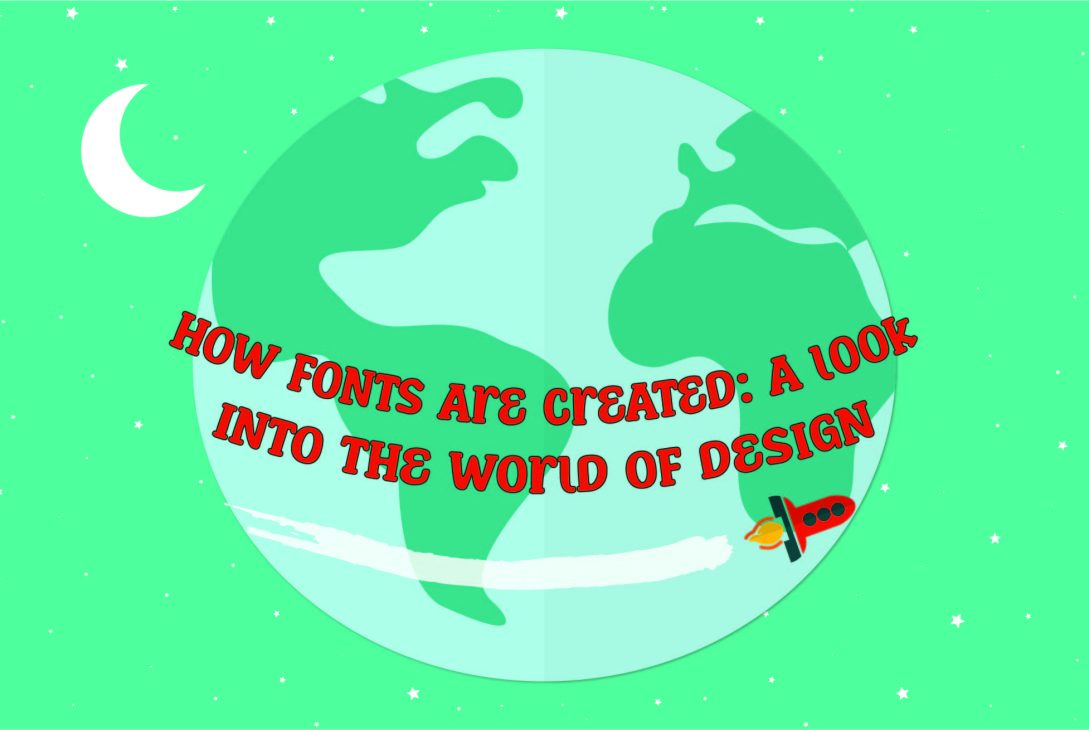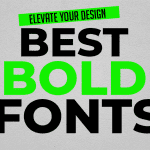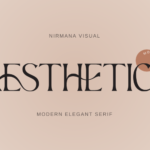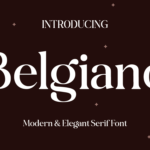Fonts are everywhere. They are the alphabets, numericals, and other characters that one is able to identify on a computer, cell phone, printed material like books, newspapers, magazines, and bills, and even on billboards, among others. But how do these fonts come into existence? Designing a font is more than a process of engineering; it is a craft. It refers to the process of trying to make each character that makes up letters and numbers look good and similar. In this guide, you are going to learn the basics of creating fonts or typefaces in easy-to-understand processes.
1. A Brief History of Fonts

Fonts have a history reaching back to the dawn of the creation of actual writing. The first types of fonts can be incised into a stone or drawn with hand. With the advancement of the printing techniques, the way fonts were developed was also altered. A pretty significant one was in the fifteenth century, when inventor Johannes Gutenberg created the printing press. This made it possible to be able to produce books within a short span of time and in larger quantities than before. All these had to be engraved on a metal plate—the technology that brought about the movable type of print.
Typography in the present century has been advanced, and it is now done in computers as compared to metal and ink. Modern type designers (they are the ones who create fonts) are using tools to create the fonts that are printable as well as visible on any digital display.
If you want to learn the complete history of fonts then read our article “The History of Typography: From Ancient Scripts to Modern Fonts”
2. The Parts of a Font

So, before starting the creation of a font, let’s learn more about the elements that form letters. These parts include:
- Baseline: It is most of the time the horizontal line obvious on the letter where most of the letters rest. For instance, the lowermost point of the letter ‘a’ lies on the baseline.
- Ascender: That part of the letter that stands just above the body of the letter, just like the ‘b’ when viewed in upper case.
- Descender: The sort of part in a letter that extends below the baseline, as can be seen from the flag of the letter “g.”
- X-height: The measurement of the stem width of the lowercase letters, which is named after the letter “x.”
- Serif: horizontal thin lines extended from the bottom of the letters in the serif fonts, like in Times New Roman.
- Stem: It is referred to as the straight or long stroke that is part of the letter that forms a main vertical or diagonal line, such as the ‘t’ in the word “L.”
- Bowl: The interchange part of letters such as “b’ or “o” or any letter that has a curved part.
- Counter: The inner region of a letter, for example, the interior of the letter ‘o’ or the letter ‘e’.
The knowledge of these terms enables the designers to ensure that their fonts appear neat and professional.
3. Design Principles for Fonts

When creating a font, designers need to think about how the letters will look and work together. Here are some important principles to consider:
- Consistency: It is important that each of the letters in a font seems to be of the same design, or at least as if they could be of the same design. This means that, for instance, the shapes of the various letters in a typeface should be similar, and the thickness of the strokes in different letters should be the same. Appropriate fonts create the impression of the business and professionalism of the text.
- Legibility: According to the most effective conventions that ought to be followed when selecting the type of font that one needs to use, there is a need to ensure that the font that is selected should be easily identifiable by the human eye, that is, the body text font should be able to be easily read by the human eye.
- Balance: An ideal font should be balanced, where the black parts that compose the font are equal to the white spaces that are located around the shape of the letters. Clearly, there are apparent benefits of the balanced font in that they are less stressful on the eyes.
- Proportion: Certain sizes and/or shapes with letters should rhyme with each other. For instance, the small tendrils attached at the baselines of the letters in serif fonts should not be as thick as they should not be very thin from the main parts of the letters.
- Purpose: However, each type of font has its intended use since all fonts are created specifically for a given task. There are those special fonts that have been designed with some level of elegance, and then there are others that are designed with consideration of simplicity and legibility. The font used should match one’s application of it.
4. The Steps in Creating a Font

The process of making a font usually involves several key steps. Let’s break them down:
1. Conceptualization
The first way is to develop the initial concept for the font. The designer then gets to choose whether the font is going to be of certain style and what it is going to be used for. For instance, is it going to be the cool and thin font for the IT website or the childish slant for a greeting card website? This stage is used for the collection of ideas only and is generally referred to as the idea generation stage.
2. Sketching
Finally, the designer begins to work on the letters and the structure according to the design type in relation to the message or concept in general. This may be done by hand on paper or on the computer without the need of an eraser or pencil. It’s better to begin with something like “H,” “O,” “n,” or “o,” as these letters give a preliminary feeling of the whole look. This is the first step to coming up with the designs, and hence the sketches are not supposed to be perfect at this stage.
3. Digitization
Once the sketches are complete, the designer scans the sketches onto a computer with the help of appropriate software. This step entails drawing fine lines and arcs for every letter that is to be designed. It also enables the designer to correct the shapes using the building tool and also enables equal and even edges.
4. Refinement
When the letters are scanned, the designer must ‘clean up’ the font he or she has created. This process includes the precise adjustments of the space between the letters called kerning, the proper distance between the lines of text called leading, and some others. In this step, it is also important to make many changes and check the font in various contexts, for example, when it is viewed in tiny dimensions or displayed on various types of screens.
5. Testing
Svetlana developed the process of testing as one of the critical stages in font creation. The designer also tests the font in different areas to be able to determine its suitability in terms of appearance and functionality. It could mean printing it out, using it on a website, or to experiment on other languages. This is to ensure that any faults that might be present are identified and corrected before one allows the font to be complete.
6. Exporting
The final step is to export the font so that others can use it. Fonts are usually saved in formats like OpenType (OTF) or TrueType (TTF), which are compatible with most computers and design software. The designer might also create different versions of the font, such as bold or italic, to give users more options.
5. Tools for Creating Fonts

Today, designers have access to a variety of tools that make font creation easier. Here are some of the most commonly used tools:
- Glyphs: A popular tool for Mac users that makes it easy to create and edit fonts.
- FontLab: A powerful font editor used by many professional designers. It works on both Mac and Windows.
- RoboFont: A customizable font editor that’s great for designers who like to tweak every detail.
- Adobe Illustrator: While it’s not specifically for fonts, many designers use Illustrator to create the basic shapes of their letters before turning them into a font.
6. The Technical Side of Fonts
Fonts aren’t just about looks—they also involve a lot of technical details. Here are a few key technical aspects of font creation:
- Encoding: The font needs to be designed in an efficient manner so that it can work on different computers and gadgets. This means associating each character with a certain code, for example, in the Unicode system, where each letter will display the right figure on the screen when you type.
- Hinting: Squint hinting is a process that aids fonts to be better displayed on screens, particularly when they are small. It also adds directives to the font file regarding how the computer accessing the text should display the letters properly.
- Font Metrics: These are the measurements that tell how big the letters are and how much space is in-between the letters. There’s much to commend these good font metrics as they help improve the appearance of text and make the lines of the text just right.
Conclusion
So, to create a font is quite complicated, as it involves coming up with ideas and then putting these ideas into effect. Beginning with brainstorming of the initial concept and finishing with the detailed work on the final piece of a typeface, type designers think a lot when designing every single letter, numeral, or symbol in a given font. The end product is that which we take and utilize in our day-to-day activities without necessarily being informed about the efforts that went into its production. All in all, fonts are crucial when it comes to presenting messages in books, websites, or even billboards.













